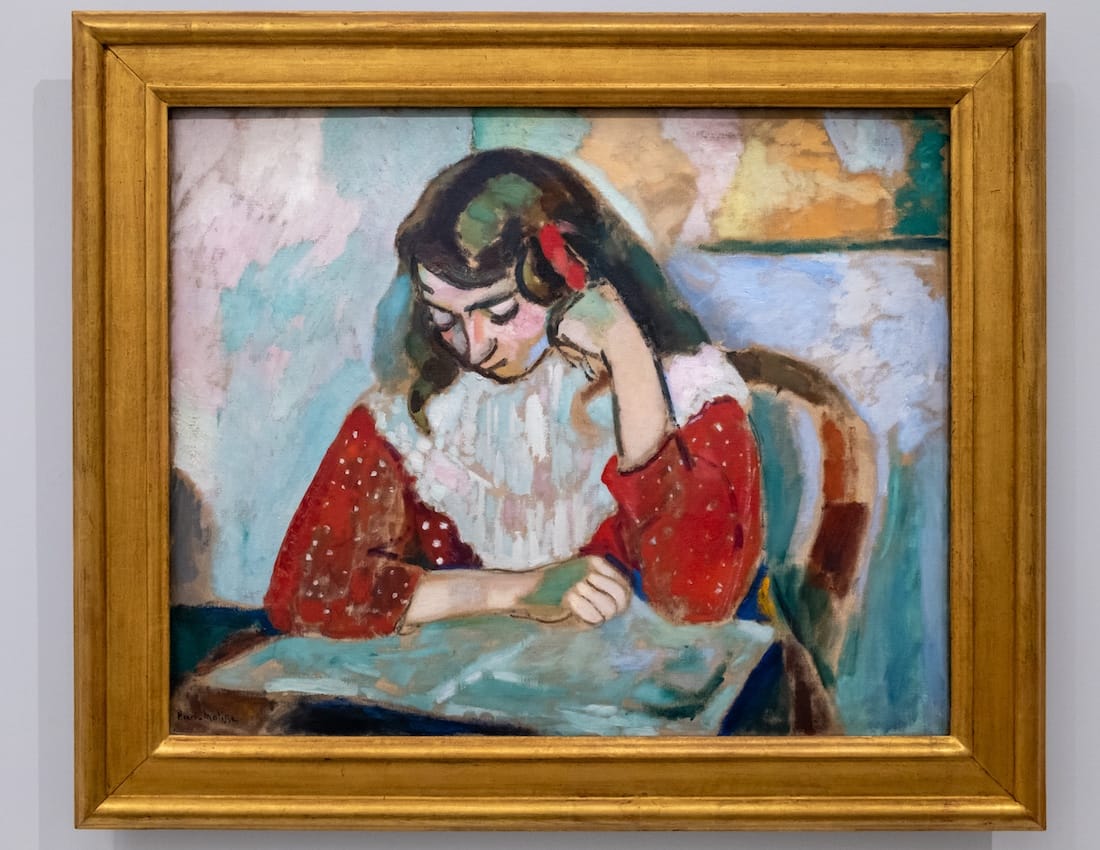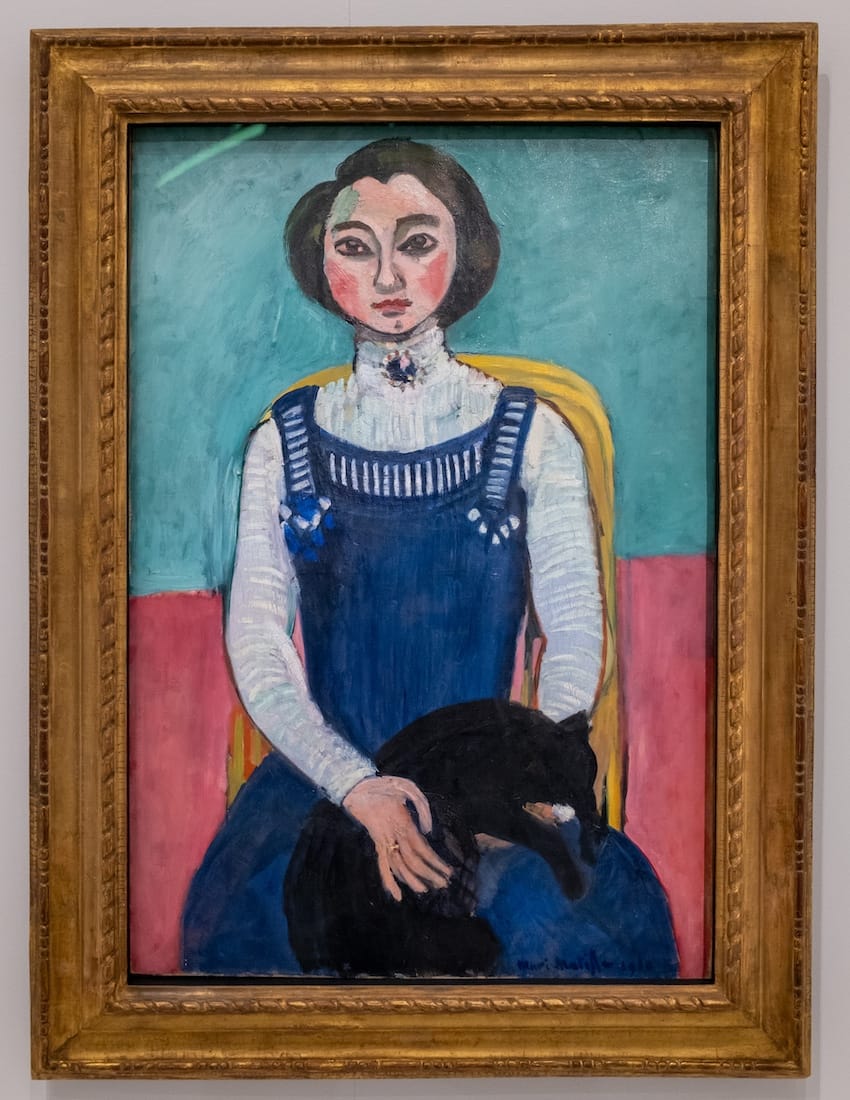The Musée d’Art Moderne in Paris is hosting an exhibition dedicated to Henri Matisse’s portraits of his daughter, Marguerite, who was both a constant muse and a pivotal yet discreet figure in his life. Bringing together over 110 works, many never before shown in France, the exhibition spans paintings, drawings, sculptures, prints, and ceramics, tracing Marguerite’s presence in Matisse’s art from her childhood until after the Second World War. It also incorporates archival materials, photographs, and works by Marguerite herself, revealing her as both an artistic subject and an influential force in her father’s career. Matisse saw her as a mirror of himself, and their portraits together capture a deep mutual trust, affection, and artistic complicity.
Born in 1894 to Matisse and his model Caroline Joblaud, Marguerite grew up within the close-knit Matisse family after his marriage to Amélie Parayre. Illness shaped her early years: after a tracheotomy at age seven, she often concealed her scar with the black ribbon that became a distinctive feature of her portraits. Denied regular schooling, she became a “studio child,” constantly present as her father worked. From the mid-1900s onward, Matisse painted her in various moods: first as a quiet child, then as a self-assured teenager. These early portraits, including the wonderful “Marguerite Reading” (1906) and the equally delightful “Marguerite with a Black Cat” (1910), reveal both tender intimacy and bold experimentation in form and color.


Henri Matisse, "Marguerite Reading" (1906) (left) and “Marguerite with a Black Cat" (1910) (right)
Throughout the 1910s and into the early 1920s, Marguerite remained a central figure in Matisse’s evolving style, from the geometric austerity of “White and Pink Head” (1914-15) during World War I to the atmospheric balcony portraits of Nice. After a final surgery in 1920 freed her from wearing the ribbon, Matisse captured her convalescence in tender works such as the intimate “Marguerite Asleep” (1920). Yet by the early 1920s, her appearances shifted. She was often paired with professional model Henriette Darricarrère, and by 1923, following her marriage to writer Georges Duthuit, she disappeared entirely from Matisse’s painted work. Marguerite instead became a crucial behind-the-scenes figure, managing Matisse’s dealings with dealers, curators, and collectors, overseeing print production, and organizing exhibitions.
Marguerite’s own artistic pursuits were varied: she painted still lifes, landscapes, and self-portraits, exhibiting alongside her father and other contemporaries. She later experimented with fashion design, presenting a clothing collection in England in 1935, though she eventually abandoned the project. Her dedication to managing her father’s artistic legacy became paramount, including her work toward a catalogue raisonné of his oeuvre. Known for her rigor and high standards, she acted as Matisse’s trusted representative and guardian of his artistic vision.
The Second World War marked a dramatic turn in her life. Marguerite joined the French Resistance in 1944, serving as a liaison for the Francs-Tireurs et Partisans. She was betrayed, arrested by the Gestapo, tortured, and imprisoned, narrowly escaping deportation when Rennes was liberated. For months, Matisse was unaware of her peril. Their reunion in January 1945 was deeply emotional, inspiring the last portraits he ever made of her: drawings and lithographs suffused with tenderness and admiration for her courage.
In the end, Marguerite’s enduring presence in Matisse’s work—over one hundred portraits spanning decades—stands as a testament to their extraordinary bond. She was more than a model: she was a collaborator, critic, caretaker of his legacy, and a resilient figure whose life bridged art and history. This exhibition not only celebrates Matisse’s artistry but also brings to light the story of a remarkable woman whose face and spirit profoundly shaped one of the twentieth century’s greatest painters.
Matisse et Marguerite. Le regard d’un père is at the Musée d’Art Moderne de Paris until 24 August 2025.